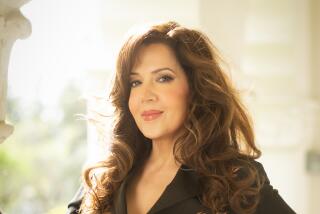How Children Perceive TVâs World of Diversity
In a national poll conducted last spring by Children Now, a childrenâs advocacy organization, kids spoke out, loudly and clearly. âI usually see the white people being the good guys and the heroes and the African Americans and the Latinos being like the criminals and jumping the border and robbing and stuff.â âThere really arenât that many Asian people out there in television.â
Children Now recently took a snapshot of the 1998 fall prime-time lineup to assess what degree of diversity kids would see on this seasonâs screen. From September through mid-October, the organization recorded more than 460 main characters on 77 shows airing between 8 and 10 p.m. on the six major networks--ABC, CBS, Fox, NBC, UPN and the WB. Although the results show some improving trends, they also reveal that, for the most part, kidsâ perceptions are on target.
While almost 20% of the main characters on prime time are African American, less than 2% are Latino and less than 2% are Asian. There are no Native Americans on prime-time shows, and less than 0.5% of the characters are of mixed heritage.
The picture fades even further into black and white when characters are categorized by age and gender. Of the approximately 200 female prime-time characters, Latinas and Asian women make up less than 2% combined.
And, perhaps most important for children, of the 80 prime-time youth characters under the age of 18, there is one Latino, no Asians and no Native Americans. As one young Latino remarked, âA lot of Latino kids look up to black or white people because thatâs the only things they see on TV. There are no Latino people for them to look up to.â
Last spring, Children Now held a conference in Los Angeles that brought together leaders in entertainment, news and advocacy, and released a groundbreaking study called âA Different World: Childrenâs Perceptions of Race and Class in the Media.â Young people revealed that when they turn on the TV set, they understand its power and they see what is there and not there.
For example, children of all races strongly believe that there are not enough Latino or Asian characters on TV. And more than two-thirds of all children believe it is important to see your own race on television. As a young Latina observed, âWow, thereâs no people like me?â
Kids also reported that when they do see people of color on TV, it is often in unflattering portrayals, creating different expectations. Across all ethnic groups, children believe white characters are more likely to be rich, smart and successful and are more often seen in roles of authority such as boss, leader or police officer. By contrast, they believe African American and Latino characters are more likely to be poor, lazy, unlawful or goofy.
While the small number of Latinos, Asians and Native Americans in this seasonâs lineup make it difficult to draw any conclusions about their character roles, the 90 African Americans on prime time reveal several trends regarding black and white portrayals. Compared to white actors, African American actors are about four times as likely to play service industry roles and far less likely to be teachers or professors (6% for blacks versus 21% for whites).
On a more positive note, todayâs kids are far more likely to see minority actors in a major role when they turn on the television. Almost 60% of the prime-time shows have a person of color in their main casts. Clearly, there have been great strides forward from the days when color television really meant mainly white and a little black.
But there is still work to be done: Within that 60%, only one-half of the shows feature more than one character of color. To reach a more inclusive audience, networks will have to continue challenging themselves to include more than one character, to do more than sprinkle a few minorities in the background. âI donât think that they should have an Asian person just standing there. I mean, I think that they should have them in the workplace or like a friend or something.â Indeed, TV must begin to reflect the future of our childrenâs world, one that will be far more diverse than our own. According to the U.S. Bureau of the Census, todayâs kids are growing into a world that will be 68% white, 12.6% African American, 14% Latino, 4.8% Asian and almost 1% Native American by the year 2010. Already, among children in California, there is no one group that constitutes the majority. From this perspective, itâs no wonder that kids look around and remark, âI think the perfect show for me would be a show that had every race. Not a show with only African Americans or only Latino people--a show that will fit everybody.â
By counting the casts and noting the occupations, Children Now has taken a necessary first step toward reconciling how children perceive prime-time television and how to improve that picture. This seasonâs snapshot of prime-time TV characters supports the findings of our earlier studies with children.
Entertainment executives would be wise to listen to these future consumers who expect fairness and diversity in TV programming. After all, it is their hearts, minds and souls that speak the loudest and clearest across all racial and ethnic lines, telling us: âIt is important to see people of your own race on television because it tells children that people of their race are important.â
*
Lois Salisbury is president of Children Now. Dr. Alvin F. Poussaint is director of the media center of the Judge Baker Childrenâs Center in Boston.
More to Read
The complete guide to home viewing
Get Screen Gab for everything about the TV shows and streaming movies everyoneâs talking about.
You may occasionally receive promotional content from the Los Angeles Times.






